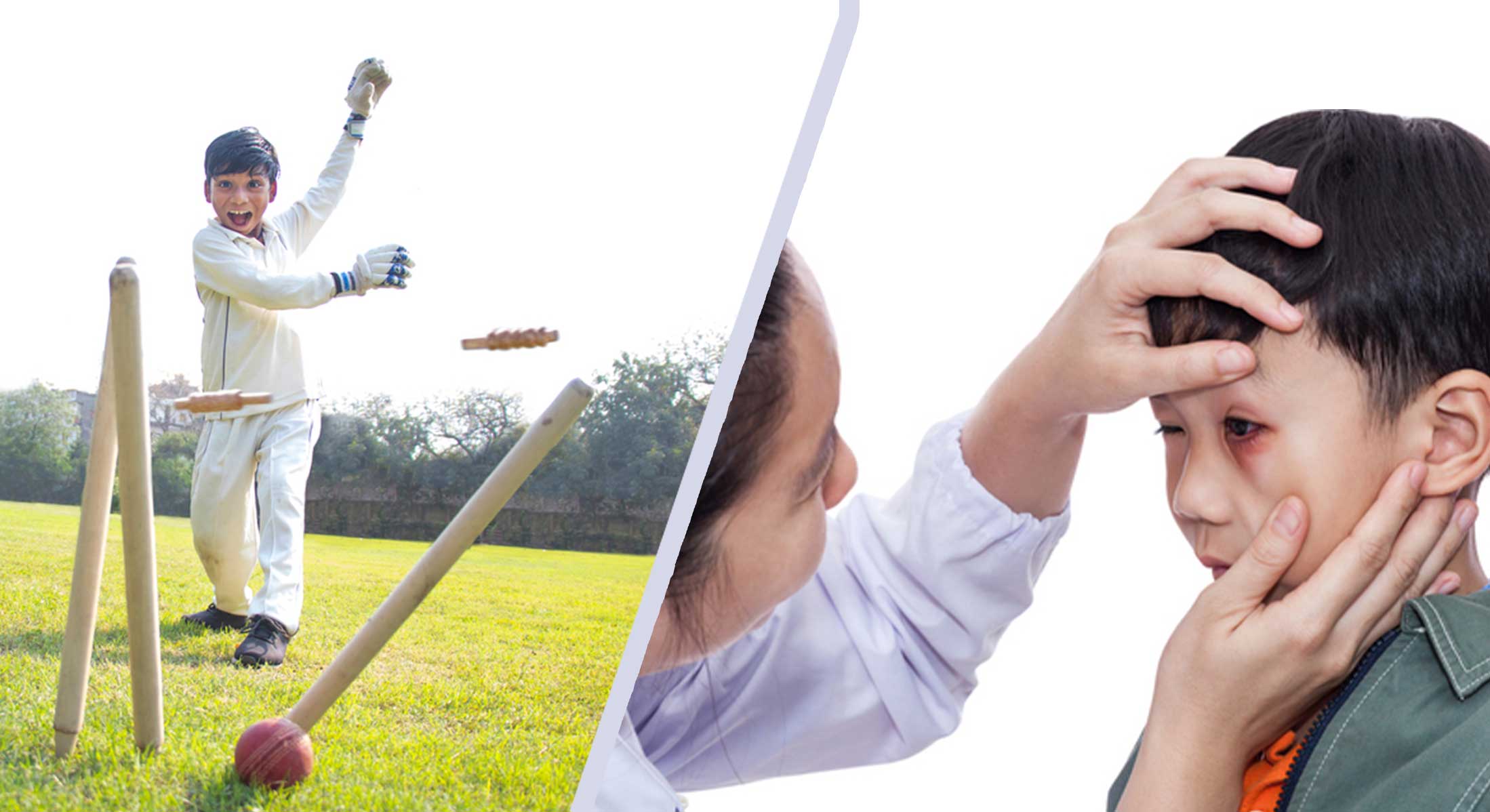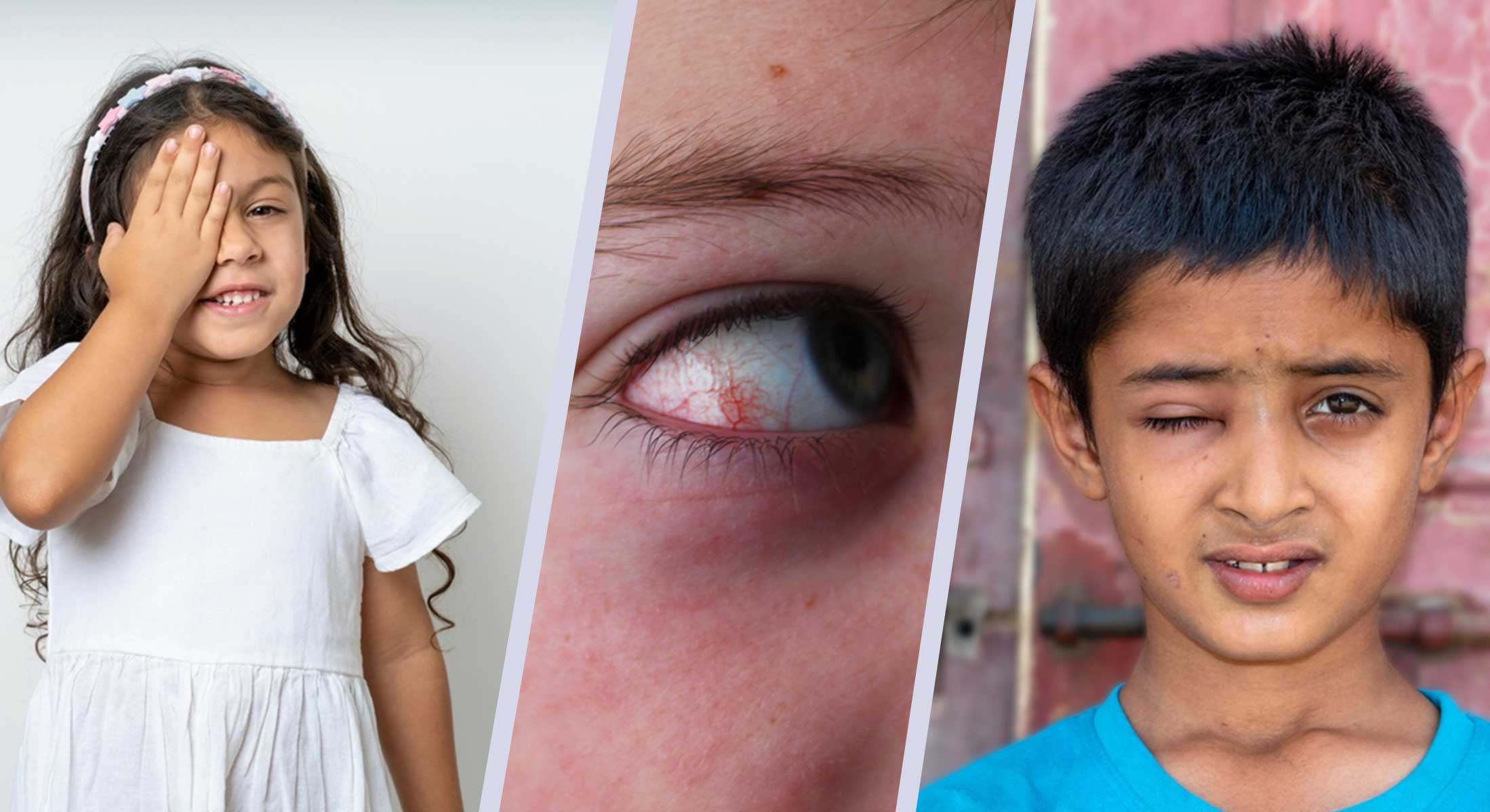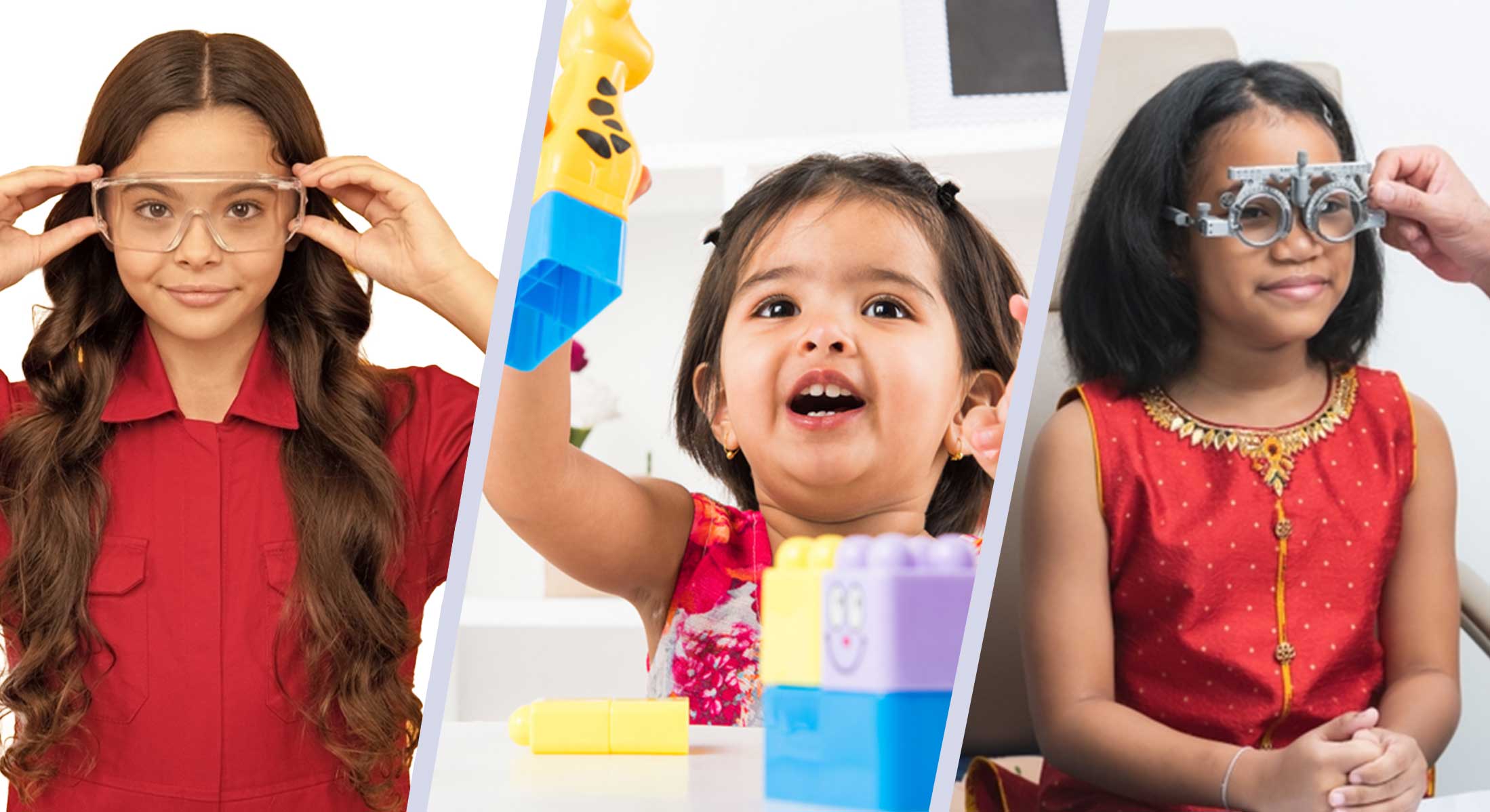Safeguarding Young Eyes – A Comprehensive Guide to Preventing Eye Injuries in Children

Understanding Eye Injuries
- Non-penetrating eye injuries – are those that involve trauma to the outer eye and its surrounding structures. They can include contusions, abrasions, and chemical eye injuries.
- Penetrating eye injuries – are those that involve foreign objects or substances which enter the eye and cause damage to the internal structures.
Common Causes of Eye Injuries in Children
- Sports and recreational activities – High-impact sports, such as basketball, baseball, and racquet sports, can pose a significant risk of eye injuries due to flying objects or collisions.
- Accidental poking or scratching – Young children may accidentally poke or scratch their eyes with their fingers or objects they are holding.
- Household hazards – Chemical substances, cleaning agents, and sharp objects within reach can cause chemical or non-penetrating eye injuries.
- Exploratory behaviour – Children may explore their environment by inserting small objects into their eyes, leading to potential penetrating injuries.
Symptoms of Eye Injuries in Children
- Eye pain – Children may complain of eye pain, discomfort, or a feeling of something being stuck in their eye.
- Redness and swelling – Injured eyes may exhibit redness and swelling around the eye or eyelids.
- Tearing and discharge – Excessive tearing or unusual discharge from the eye may indicate an eye injury.
- Sensitivity to light – Children may squint or avoid bright light when suffering from an eye injury.
Eye Injury Treatments
D espite vigilant supervision, eye injuries can still occur in toddlers and older children. However, prompt medical attention can prevent minor eye injuries from escalating into more significant issues. The treatment for eye injuries will depend on the type and severity of the injury. If your child experiences an eye injury, here are some immediate steps you can take before seeking medical attention:- Rinse with water – For chemical eye injuries, rinse the eye with clean, lukewarm water for at least 15 minutes to flush out the harmful substance.
- Do not rub – Advise your child not to rub or put pressure on the affected eye, as it may exacerbate the injury.
- Cover the eye – In cases of non-penetrating injuries, gently place a clean, sterile dressing over the injured eye to shield it from further harm.
- Avoid removing debris directly from your child’s eye – Instead, gently lift their eyelid and encourage them to blink frequently. If the debris is not flushed out naturally with tears, it is crucial to seek medical attention promptly.
- Use of eye medication – When caring for eye injuries, do not use any medication or ointment on your child’s eyes unless specifically recommended by a medical professional.
Preventing Eye Injuries in Children
- Use protective eyewear – Ensure your child wears appropriate protective eyewear, such as safety goggles or helmets, during sports and recreational activities.
- Childproof your home – Store hazardous substances out of reach, secure sharp objects, and cover electrical outlets to minimize potential risks.
- Educate on proper handling – Teach your child the importance of not touching their eyes with dirty hands or sharp objects.
- Safe use of toys – Make sure your child only plays with toys that are appropriate for his/her age group. Regularly inspect toys for sharp edges or small parts that could pose a choking hazard or cause eye injuries.
- Regular eye checkups – Schedule routine eye checkups for your child to detect any underlying issues and ensure healthy vision.
- Vehicular safety – Make sure your child wears a seat belt when travelling in a car.
- Enhanced supervision – Be extra vigilant during activities such as arts and crafts with young children.
Conclusion
Read More Eye Care Blogs
4 Eye Problems That Can Result from Diabetes
If you are a diabetic, it means that the blood glucose or blood sugar in your body is too high. Most of the food you eat is broken down by your body into glucose - the main source of energy that is used for the various functions of the body. Insulin (a hormone made by...
Eye Safety at Home – Tips to Prevent Eye Injuries
ur homes are meant to be safe havens, but they can also be unexpected sources of danger, especially when it comes to eye injuries. Whether it's a mundane task like cooking, working in the yard or garden, Do-it-yourself projects, or even playtime...
Celebrate Deepawali Safely – Eye Safety Tips for a Bright and Injury-Free Festival
Celebrate Deepawali Safely - Eye Safety Tips for a Bright and Injury-Free Festival eepawali, the festival of lights, is a time of celebration and joy for millions of people in India and across the world. It's a time when families come together,...






